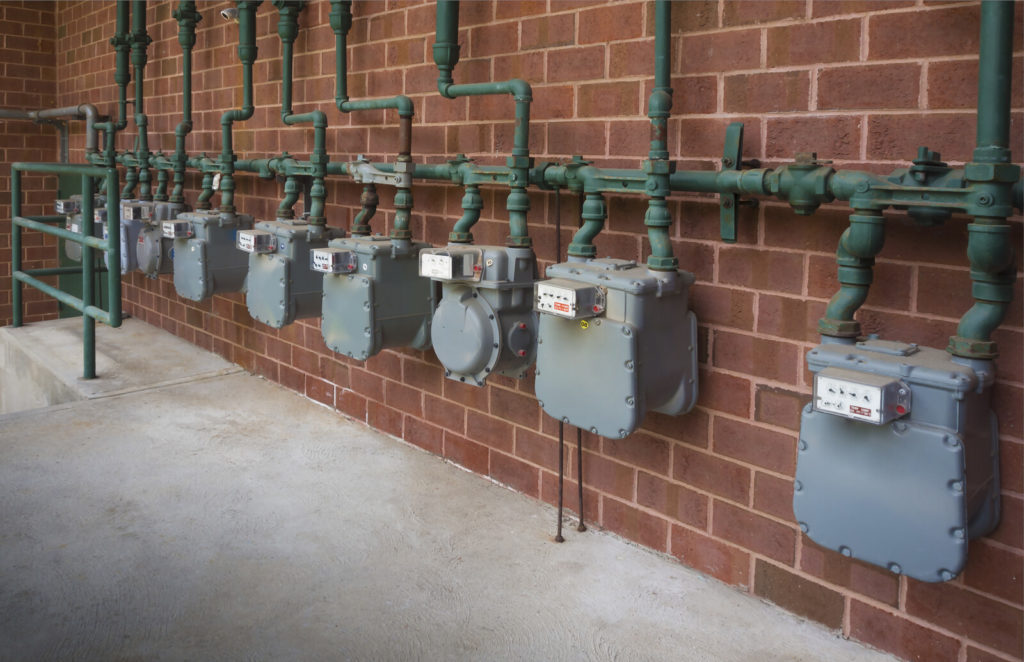
U.S. natural gas futures jumped about 4% to an 11-week high on Tuesday on a drop in daily output and some technical short covering.
Front-month gas futures for November delivery on the New York Mercantile Exchange rose 14.1 cents, or 4.2%, to settle at $3.498 per million British thermal units (mmBtu), their highest close since July 18.
That price increase pushed the contract into technically overbought territory.
Futures prices were also supported because some short sellers needed to cover positions in recent days, analysts said, noting speculative short positions on the NYMEX reached a 10-month high last week.
In the cash market, average prices at the Waha Hub in the Permian Shale in West Texas remained in negative territory for a 10th day in a row as ongoing pipeline maintenance, like work on Kinder Morgan’s Permian Highway, trapped gas in the nation’s biggest oil-producing basin.
That was the 19th time Waha prices have dropped below zero so far this year and compares with an average of $1.41 per mmBtu so far in 2025, 77 cents in 2024, and $2.91 over the previous five years (2019-2023).
Waha first averaged below zero in 2019. It happened 17 times in 2019, six times in 2020, once in 2023, and a record 49 times in 2024.
In the tropics, the U.S. National Hurricane Center projected Tropical Storm Jerry would strengthen into a hurricane on Wednesday as it marches northwest toward the northern Caribbean Islands and then north toward Bermuda over the next week.
SUPPLY AND DEMAND
Financial firm LSEG said average gas output in the Lower 48 states fell to 106.5 billion cubic feet per day so far in October, down from 107.4 bcfd in September and a record monthly high of 108.0 bcfd in August.
On a daily basis, output was on track to drop to a preliminary four-month low of 104.4 bcfd on Tuesday. Preliminary data, however, is often revised later in the day. That compares with a daily record high of 109.2 bcfd on July 28.
Record output earlier this year allowed energy companies to inject more gas into storage than usual so far this summer. There was about 5% more gas in storage than normal for this time of year.
Meteorologists forecast the weather will remain mostly warmer than normal through at least October 22.
That late-season warmth should reduce gas demand by cutting the amount of fuel used to heat homes and businesses by more than the amount of fuel power generators need to burn to keep air conditioners humming. About 40% of the power produced in the U.S. comes from burning gas.
LSEG projected average gas demand in the Lower 48 states, including exports, would slide from 99.2 bcfd this week to 97.5 bcfd next week. The forecast for next week was lower than LSEG’s outlook on Monday.
The average amount of gas flowing to the eight big U.S. LNG export plants rose to 16.1 bcfd so far in October, up from 15.7 bcfd in September and a monthly record high of 16.0 bcfd in April.
On a daily basis, LNG feedgas was on track to slide to a preliminary two-week low of 15.5 bcfd on Tuesday due mostly to a decline in flows to Cheniere Energy’s 4.5-bcfd Sabine plant in Louisiana to around 3.9 bcfd, down from an average of 4.6 bcfd over the prior seven days, according to LSEG data.
(Reporting by Scott DiSavino in New York; Editing by Chizu Nomiyama and Nick Zieminski)